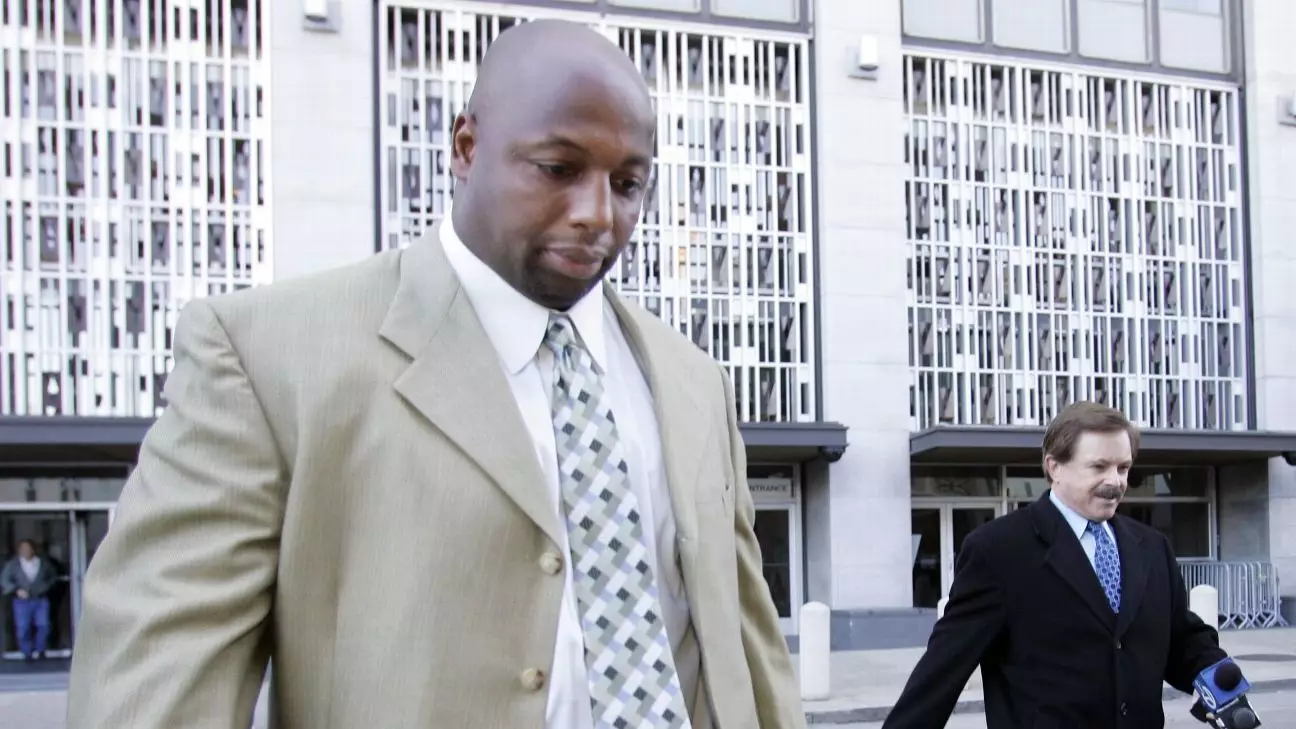In a critical turn of events, former NFL player Dana Stubblefield finds himself entangled in a legal quagmire that raises significant questions about race, justice, and the repercussions of high-profile legal cases in America. The recent decision by a Santa Clara County judge to deny bail pending an appellate court’s remittitur has pushed the spotlight back onto the systemic issues within the criminal justice system, particularly concerning racial bias. This situation is multifaceted, bridging the realms of sports fame and serious allegations that have profound implications for the individuals involved.
On Friday, Judge Hector Ramon announced that he could not grant bail to Stubblefield, as the case remains under appeal. This pronouncement showcases the intricacies of legal processes when appellate courts are involved. The Sixth District Court of Appeal vacated Stubblefield’s conviction, emphasizing that racial bias had played a substantial role in tainting the trial. While this appeal marks a significant step in redefining Stubblefield’s legal standing, the decision to deny bail illustrates the tension between judicial caution and the quest for justice. It brings into question the role of state powers in cases that have gained considerable public and media attention.
Stubblefield’s legal team asserts that he has effectively been rendered legally innocent, having had his conviction vacated. They argue that keeping him incarcerated undermines his rights, illustrating a potential misalignment between legal procedure and fundamental principles of justice. Their efforts to transfer him from California State Prison to a county jail for his eventual release reflect an urgent desire to correct perceived injustices that have persisted in his case.
At the heart of this case lies the intersection of racial dynamics and judicial outcomes, spotlighted by the California Racial Justice Act of 2020. As protests erupted nationwide following George Floyd’s murder, this legislation emerged as a response to systemic injustices pervasive in the criminal justice system. The appellate court’s findings that prosecutors engaged in “racially discriminatory language” during Stubblefield’s trial not only set a legal precedent but also prompted broader discussions about race and the courtroom.
In a nation grappling with its historical and contemporary racial inequalities, the implications of this case extend beyond the individual. The use of racially charged rhetoric in legal proceedings serves as a reminder of the biases that can influence verdicts, particularly against defendants of color. The acknowledgment of these injustices by the appellate court has significant ramifications, suggesting a need for a reexamination of existing legal frameworks to ensure fair treatment for all individuals, irrespective of race.
Stubblefield is more than just a former athlete; he is a symbol of the glamorous yet sometimes volatile world of professional sports. His career, commencing with defensive accolades in the 1990s, crafted an image of success as he transitioned from the San Francisco 49ers to other notable teams. The stark contrast between his NFL accomplishments and the allegations leading to his conviction raises poignant questions about how society perceives athletes embroiled in legal issues.
While the sports world often idolizes its stars, the legal downfall of such figures reveals the fragility of celebrity status. As Stubblefield seeks to reclaim his place in society following the vacating of his conviction, the NFL community faces an uncomfortable truth regarding the consequences of actions taken both inside and outside the confines of the game. The focus on his case invites an industry-wide reflection on how allegations of misconduct can affect not just the individuals involved, but the entire sports culture.
As the legal framework moves forward, one cannot overlook the broader implications of Stubblefield’s case. The eventual ruling on his bail and the impending remittitur will undoubtedly shape the future, not just for him but also for how the justice system navigates cases involving race and high-profile individuals.
The question remains: How will this case influence public perception regarding justice, particularly for people of color facing serious allegations? With his appeal proceedings still active, Stubblefield’s journey is emblematic of ongoing struggles within the U.S. legal system, making it essential to monitor how this situation will unfold in the coming months. As the legal clock ticks, the narrative extends beyond a single conviction—it’s about race, celebrity, justice, and the urgent need for societal change.


Leave a Reply